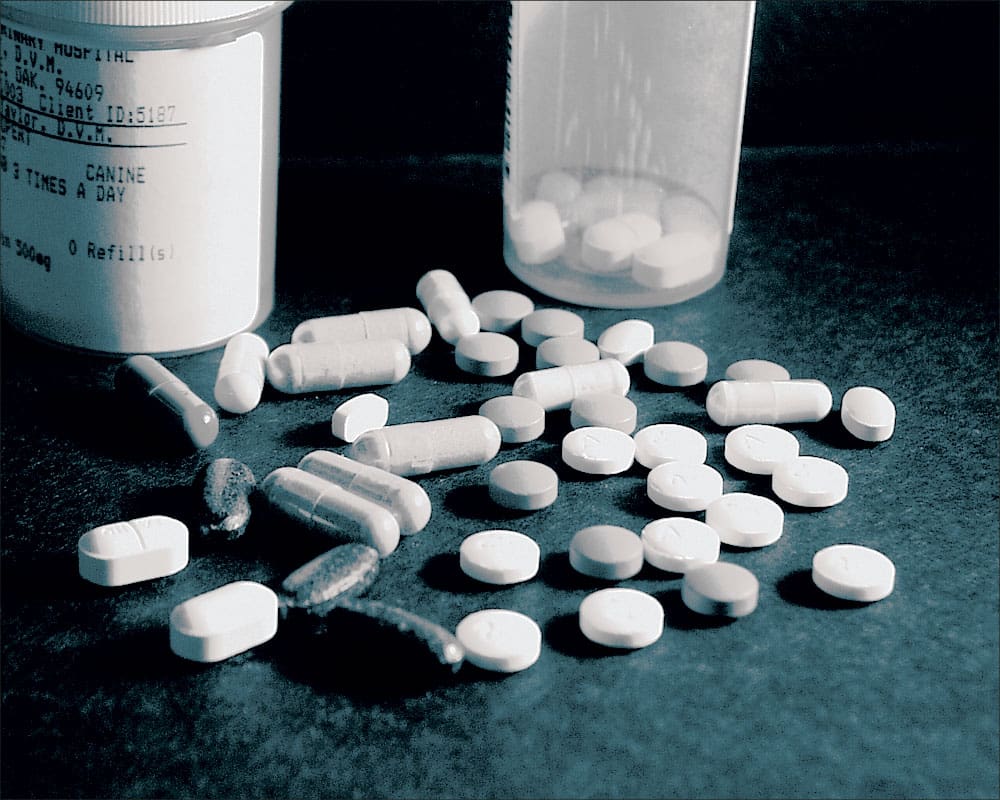A few years ago, I was at my vet’s office when an older couple brought in a Chihuahua puppy who was very ill. Despite the staff’s best efforts, less than an hour later the pup was dead. The cause? A drug overdose, due to a prescription error made by a human pharmacy.

288
The prescribed amount for this tiny pup was 0.4 mg, but the pharmacist, who had probably never come across such a small dosage, had misread the prescription as 4 mg, so the pup had received 10 times as much of the drug as he was supposed to get. My vet accepted partial responsibility, as he had failed to write a zero in front of “.4” on the prescription. (Veterinarians are now being encouraged to use leading, but not trailing, zeroes when they write prescriptions to help avoid such mistakes.
It had never occurred to me before that day to review a prescription for accuracy, but you’d better believe I’m careful to check them now. Errors are less likely to occur with prescriptions filled at your vet’s office, since the people filling the prescription know their patients and are familiar with common dosages for dogs. The growing use of human pharmacies filling prescriptions for our dogs, however, means we must also deal with pharmacists who may know little or nothing about a canine patient’s needs, or have any idea of the size of the patient when filling the prescription. This ignorance can lead to serious, even fatal, errors.
Potential for Mistakes
Incorrect dosage amounts are not the only mistakes that human pharmacists may make when filling prescriptions written for pets. Pharmacists currently receive no training in the use of drugs for non-human patients. The VIN (Veterinary Information Network) News Service has written about several problems that veterinarians have seen in recent years.
One example was a pharmacist who told a client that the dosage of diazepam (Valium) that her vet had prescribed for her dog could kill him. The pharmacist was unaware that dosages of many medications, including those used to treat hypothyroidism, seizures, and anxiety, are much higher for dogs than they are for humans, due to differences in metabolism and other factors.
The prescribed dosage was correct, but the client was now afraid to give the medication to her dog, who suffered as a result. The dog was recovering from knee surgery and the medication had been prescribed to help keep him off his leg and reduce his anxiety. Without it, he overused and injured the leg, requiring additional surgery.
One of the first cases to result in a formal complaint followed by regulatory action, the state’s Pharmacy Board issued a “notice of correction” to the pharmacist. In response, he asked that the drug store chain for which he worked provide its pharmacies with references in veterinary dosing and indications, which has since been done.
In other cases, pharmacists have altered doses, believing they are correcting a veterinarian’s mistake, or substituted medications inappropriately, without notifying either the veterinarian or the client of the changes. This has led to serious problems for some dogs. For example, when a pharmacist substitutes a different type of insulin for what a diabetic dog is accustomed to, this can cause changes in glucose control and even life-threatening hypoglycemia. In other examples, medication doses have been lowered to the point that they are no longer effective, leading to suffering and even death in some dogs. In one case, a client reduced her dog’s seizure medication on the advice of a pharmacist, and the dog developed intractable seizures that led to euthanasia.
Most of the time, veterinarians are unaware of the changes, or learn about them long after the fact, making it difficult for them to treat their patients effectively, or to report what happened to the appropriate authorities.
These problems are not new, but they are increasing as more people turn to human pharmacies in order to save money on their pets’ prescriptions. Mistakes may also occur more frequently with large national chains that fill high volumes of prescriptions, where a pharmacist is unlikely to develop a personal relationship with either veterinarians or clients. Pending congressional legislation that would require veterinarians to provide all prescriptions in writing to pet owners with a notice that they can fill the prescription elsewhere could contribute to even more frequent problems in the future.
Take-home Message
Whenever your vet gives you a prescription, make sure you understand the prescribed amount and dosing schedule. Then check the label to make sure that the name of the medication is the same as what your vet prescribed, and that the printed instructions match what your vet told you to give. If you have any questions about the medication, check with your vet, rather than relying on information from the pharmacist. If a pharmacy offers you a substitute medication, do not accept it until and unless you confirm with your vet that the substitution is acceptable. And never change your dog’s medication based on a pharmacist’s advice.






